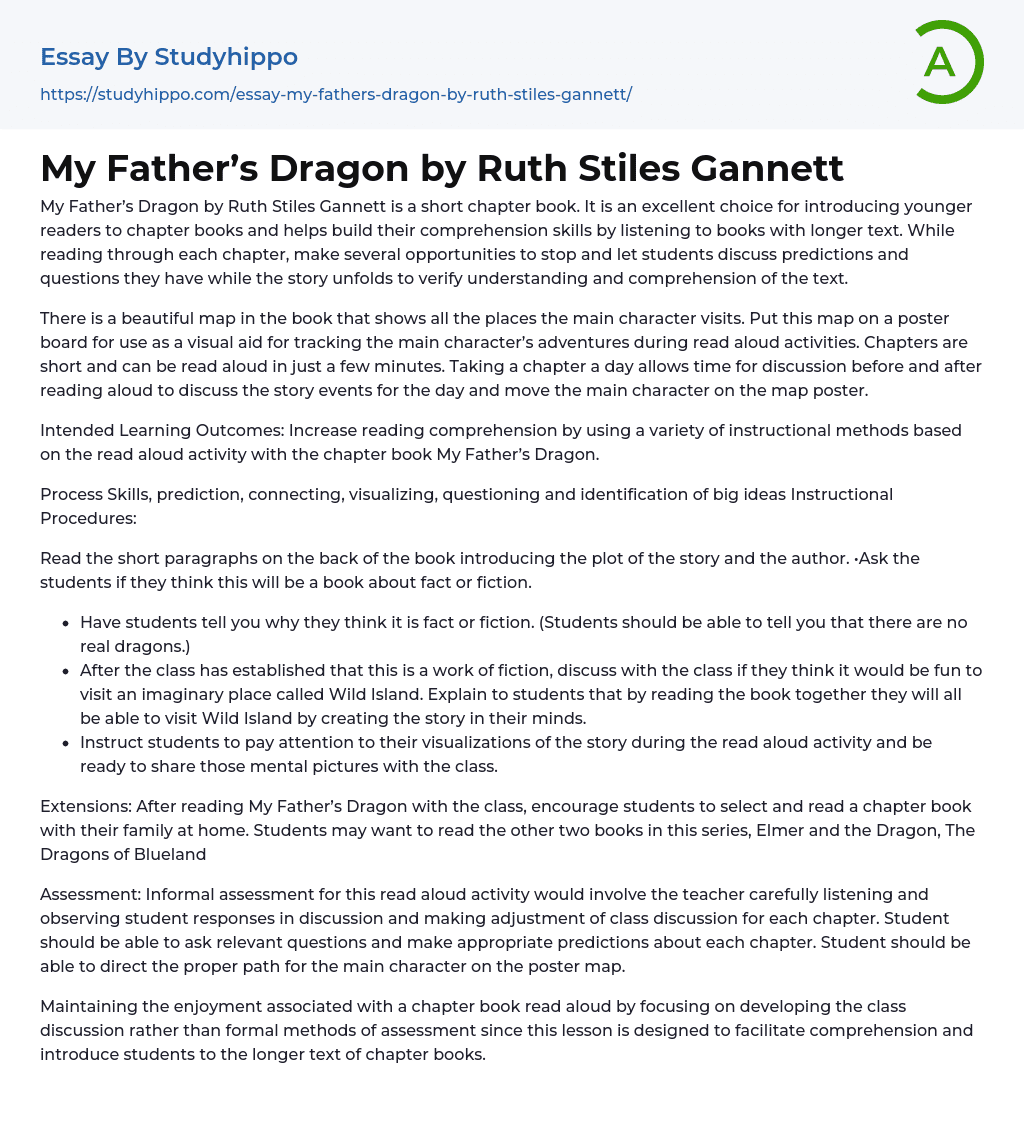My Father’s Dragon by Ruth Stiles Gannett is a short chapter book. It is an excellent choice for introducing younger readers to chapter books and helps build their comprehension skills by listening to books with longer text. While reading through each chapter, make several opportunities to stop and let students discuss predictions and questions they have while the story unfolds to verify understanding and comprehension of the text.
There is a beautiful map in the book that shows all the places the main character visits. Put this map on a poster board for use as a visual aid for tracking the main character’s adventures during read aloud activities. Chapters are short and can be read aloud in just a few minutes. Taking a chapter a day allows time for discussion before and after reading aloud to discuss the story events for the d
...ay and move the main character on the map poster.
Intended Learning Outcomes: Increase reading comprehension by using a variety of instructional methods based on the read aloud activity with the chapter book My Father’s Dragon.
Process Skills, prediction, connecting, visualizing, questioning and identification of big ideas Instructional Procedures:
Read the short paragraphs on the back of the book introducing the plot of the story and the author. •Ask the students if they think this will be a book about fact or fiction.
- Have students tell you why they think it is fact or fiction. (Students should be able to tell you that there are no real dragons.)
- After the class has established that this is a work of fiction, discuss with the class if they think it would be fun to visit an imaginary place calle
Wild Island. Explain to students that by reading the book together they will all be able to visit Wild Island by creating the story in their minds.
Extensions: After reading My Father’s Dragon with the class, encourage students to select and read a chapter book with their family at home. Students may want to read the other two books in this series, Elmer and the Dragon, The Dragons of Blueland
Assessment: Informal assessment for this read aloud activity would involve the teacher carefully listening and observing student responses in discussion and making adjustment of class discussion for each chapter. Student should be able to ask relevant questions and make appropriate predictions about each chapter. Student should be able to direct the proper path for the main character on the poster map.
Maintaining the enjoyment associated with a chapter book read aloud by focusing on developing the class discussion rather than formal methods of assessment since this lesson is designed to facilitate comprehension and introduce students to the longer text of chapter books.
- Abnormal Psychology essays
- Abraham Maslow essays
- Attachment Theory essays
- Authority essays
- Behaviorism essays
- Classical Conditioning essays
- Cognitive Psychology essays
- Counseling essays
- Developmental Psychology essays
- Educational Psychology essays
- Erik Erikson essays
- Family Therapy essays
- Jean Piaget essays
- Maslow's Hierarchy Of Needs essays
- Mental Health essays
- Operant Conditioning essays
- Personality Psychology essays
- Positive Psychology essays
- Psychoanalysis essays
- Psychotherapy essays
- Sigmund Freud essays
- Social Psychology essays
- Stanford Prison Experiment essays
- Supersize Me essays
- Adoption essays
- Aunt essays
- Babies essays
- Bedroom essays
- Caring essays
- Children essays
- Daughter essays
- Divorce essays
- Dog essays
- Dysfunctional Family essays
- Family Tradition essays
- Family Values essays
- Father essays
- Foster Care essays
- Friends essays
- Grandparent essays
- Home essays
- Hometown essays
- Husband essays
- Jealousy essays
- Love essays
- Marriage essays
- Mother essays
- Online Dating essays
- Parenting essays
- Parenting Teens essays




